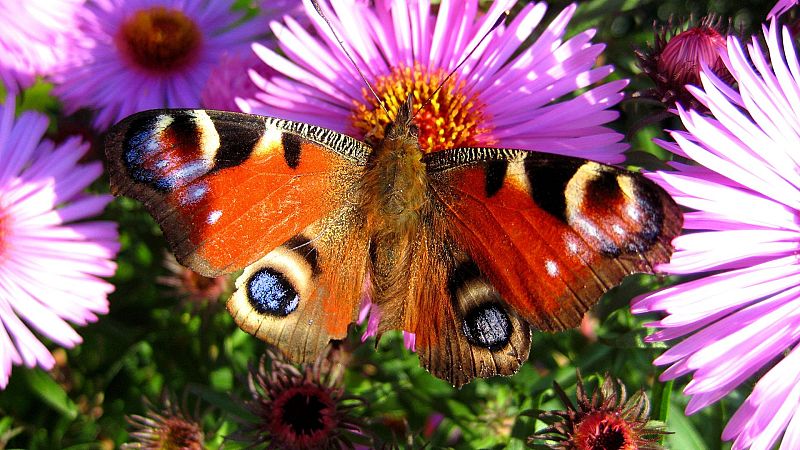No Mow May: How to turn your garden into a haven for butterflies this spring

Gardeners are being encouraged to let grass and wildflowers bloom for ‘No-Mow May’.
The annual campaign acts as a reminder of all the ways we can support insects, tackle pollution and slash emissions in our own backyards.
Putting away your lawn mower and allowing native plants to flourish is one of the best ways to help pollinators do their essential work.
Letting your lawn grow can also increase butterfly numbers by over 90 per cent, a recent study has shown.
But it may require you to rethink your prejudices: even plants traditionally considered as weeds, such as ragwort, hawthorn and ladythorn, should be embraced.
How can you make your garden friendlier to insects this spring?
Concerns over bee populations have been high in recent years as climate change and habitat destruction threaten our nectar-loving friends.
More than a third of insect species are endangered, according to a global scientific review published in the Biological Conservation journal in 2019.
This poses a major threat to food security, as insects are essential for pollinating crops.
While intensive agriculture practices such as monocropping and pesticides pose the biggest threat to insects, home gardening techniques also contribute to their decline.
Suburban neighbourhoods full of manicured lawns can be as bad for bee populations as vast expanses of concrete. Grass provides no opportunity for pollination and even emits more carbon than it sequesters when maintenance is taken into account.
Besides putting away your lawn mower, you can combat this by seeding a blend of grass, including fescues rather than turf, or planting edible plants that bees love to pollinate.
Allow a patch of grass to grow and watch as butterflies flourish
A six-year study of 600 UK gardens recently confirmed that letting your garden grow can give a major boost to buttery and moth numbers.
With butterfly numbers declining 80 per cent since the 1970s, they're in dire need of safe wild spaces to feed, breed and shelter.
The citizen-assisted study by UK nonprofit Butterfly Conservation found that letting a patch of lawn grow wild could increase butterfly numbers by as much as 93 per cent in highly arable areas, while also attracting other insect species.
In urban landscapes, it boosted numbers by 18 per cent.
Flowering ivy was found to be especially beneficial to species like Red Admiral, Comma and Holly Blue, while long grass attracts caterpillars.
Turn your garden into a pollinator paradise
The growth in urban beekeeping in recent years has raised concerns. Well-intentioned citizens keeping hives of honeybees to increase local bee populations could be inadvertently threatening other species.
A better way to increase bee populations is by creating pollinating habitats and turning your garden into a native pollinator paradise.
A great way to achieve this is to ensure you have a mixture of flowering plants that bloom in different seasons. Always plant flowers that are native to your country or area - if you’re in France stick to native western European species for example.
Native plants are easy to grow and are often pest resistant, not to mention they have evolved alongside native pollinators so the two are quite literally made for each other.
In addition to these, native species of flowering trees - cherry, apple and willow for example - are great for bees and other pollinators as they have multiple flowers at once.
Diversity is key: ensure a mixture of colours and shapes in your plants and above all never, ever use pesticides.
Finally, leave the weeds where they are. Dandelions may be unsightly but they are often the first flowers of the year for bees to land on.

